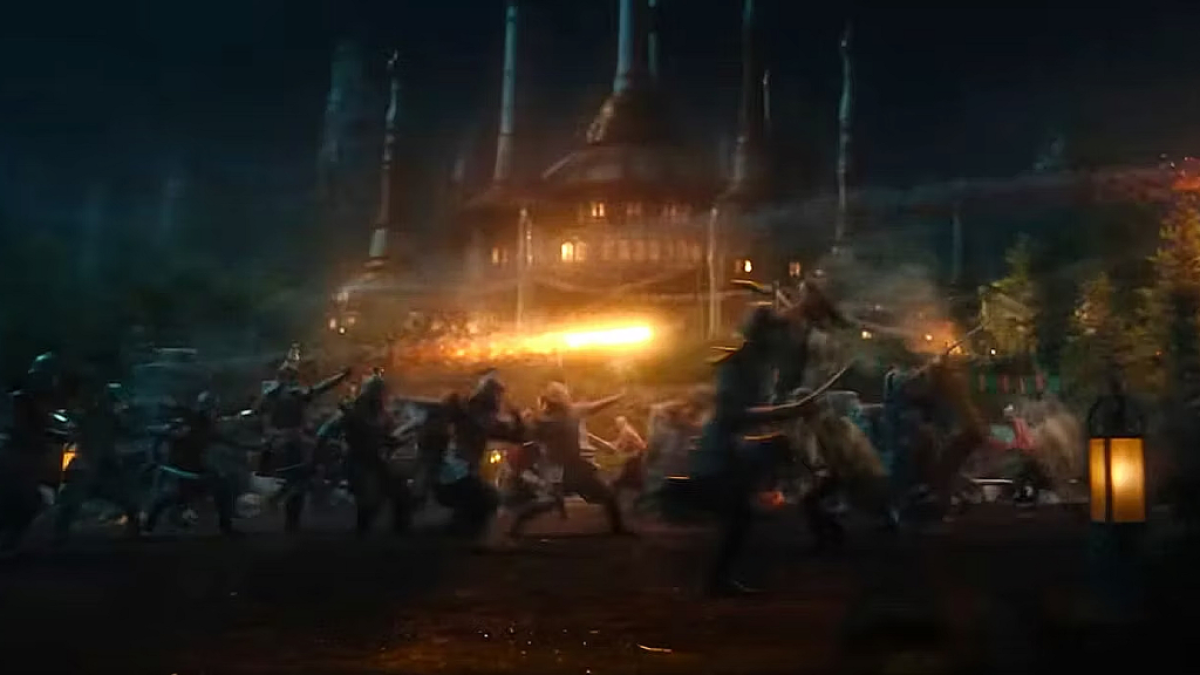Online chatter ahead of the Netflix live-action Avatar: The Last Airbender adaptation’s release focused on whether its changes would ruin the original cartoon’s story. Yet now that Netflix’s Avatar: The Last Airbender is here, one such embellishment – the Air Nomad genocide scenes – actually presents the strongest case for its existence.
Related: How Much of Book 1 Netflix’s Avatar: The Last Airbender Season 1 Adapts
The Avatar Cartoon Is Already the Perfect Last Airbender Story
See, franchise co-creators Michael Dante DiMartino and Bryan Konietzko already told Avatar: The Last Airbender‘s story perfectly the first time around. Sure, some of the Nickelodeon animated series’ episodes work better than others (just ask Reddit), but as a long-form narrative, it’s tighter than the members of Team Avatar itself. The Avatar cartoon starts its plot at exactly the right moment (when Katara and Sokka discover Aang) and deploys its history and lore sparingly and without killing momentum.
The same goes for the original Avatar‘s spot-on tone. DiMartino and Bryan Konietzko and their creative team somehow balanced nuanced character arcs and Eastern philosophy with slapstick comedy and kid-friendly jokes. Powerful emotional journeys like Prince Zuko’s redemption sit comfortably alongside a running gag about damaged cabbages. It’s frankly staggering.
Related: Avatar Fans Are Rigorously Debating the Color of Azula’s Fire in the Netflix Show
Given the ideal version of Avatar: The Last Airbender already exists, this posed an obvious challenge to showrunner Albert Kim and the folks behind the Netflix do-over. How do you retell the exact same story and not have it branded pointless at best, and inferior at worst? Compounding this dilemma was the fact that Avatar was originally conceived with the strengths and weaknesses of animation in mind, and pitched at viewers no older than 11. Following the same template – only in live-action and targeting a more grown-up demographic – was virtually guaranteed to fail.
That’s why sequences like the Air Nomad genocide in the Netflix Avatar remake’s first episode, “Aang,” are so important: because they validate the whole undertaking. As Kim rightly pointed out in a recent Entertainment Weekly interview, the original cartoon could never explicitly depict this aspect of Avatar: The Last Airbender canon. It’s simply too intense for 11-year-olds. But it’s suitable for the Netflix show’s slightly older target demo – and, instantly, revisiting Avatar‘s story becomes a bit more worthwhile.
Remakes and Adaptations Need to Break New Ground

Sure, you can quibble over the execution of the Air Nomad genocide scenes as, essentially, a half-episode-long prologue. Avatar‘s story undeniably works better by kicking off in media res; gradually discovering Aang’s backstory doesn’t just improve the pacing, being left to wonder how he survived the slaughter is more compelling, as well. Learning this info upfront strips all the mystery away, and yields a decidedly more sluggish opening installment.
It’s also fair to say that the violence and low-key gore of the Air Nomad genocide scenes are at odds with the lighter moments in “Aang.” You can almost feel the Avatar adaptation’s tonal gears crunch as it lurches between shots of crispy corpses to Sokka’s shrill antics atop flying bison Appa. Indeed, this applies to the rest of the live-action Avatar‘s wider, eight-episode first season: like Aang himself, it’s torn between childish and mature concerns, and everything suffers as a result.
Related: Is Avatar: The Last Airbender an Anime?
Yet while Kim and Co. fail to stick the landing with Air Nomad scenes (and others like them), you can’t fault their creative intentions. The point of Netflix’s Avatar remake – of any remake, for that matter – is to find a fresh approach to an existing story. This doesn’t mean changing things just for the sake of it or running roughshod over your source material’s spirit. It means expanding on underdeveloped plot beats and themes, playing to the strengths of another medium, and acknowledging the needs of a different audience.
In short: it means telling a new version of an old story, without doing either a disservice. That last bit is the trickiest to get right – and (as outlined above) the live-action version of Avatar arguably fails. But the show occasionally comes close, more often than not when it breaks new storytelling ground than when it retreads the old. Heck, if nothing else, this new material has a novelty value that the recycled stuff lacks. It’s a reason to sit up and pay attention.
And that’s why the Air Nomad genocide scenes – flawed though they most definitely are – present the strongest case for the Netflix version of Avatar: The Last Airbender‘s existence.
All eight episodes of Avatar: The Last Airbender Season 1 are currently streaming on Netflix.





Published: Feb 23, 2024 04:00 pm